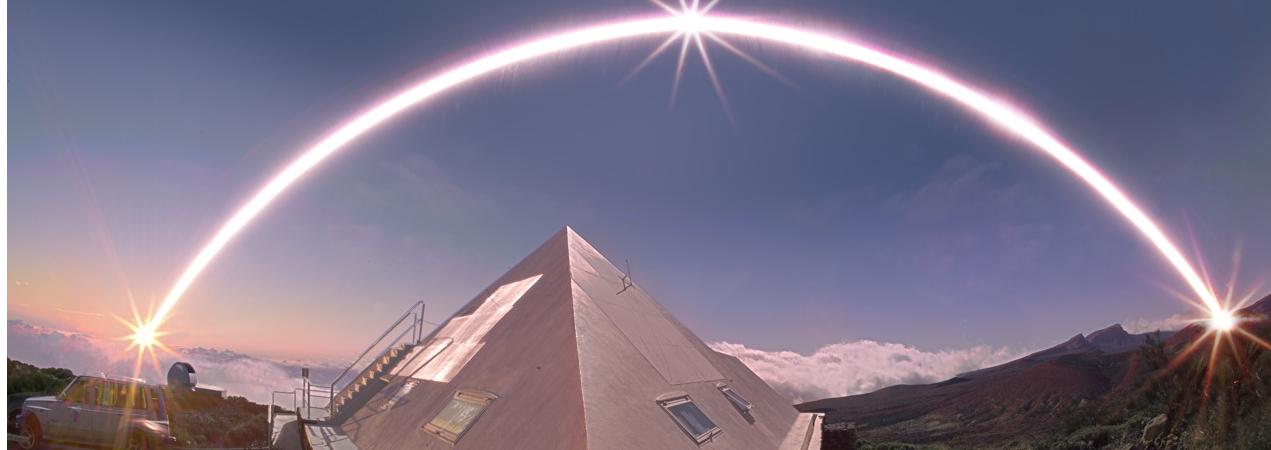Solar Laboratory Telescope


The SolarLab is a peculiar telescopic installation owned by the IAC, that contains a total of six instruments which operate continuously (on a daily basis and in some cases for more than 25 years) over day and night-time and with a unique and precise scientific observing program. The owners of the instruments are different but the IAC researchers are responsible for their operation and actively participate in their scientific exploitation through the different established consortia. The primary objective is the study of the Sun's interior through the unique tools provided by Helioseismology. In recent years, the scientific scope was extended by the incorporation of instruments devoted to Asteroseismology, Planetary transits and Earthshine monitoring.
La denominación de la instalación telescópica "Laboratorio Solar" se refiere a dos enclaves diferenciados: la Pirámide "Van der Raay" y el "Edificio Anexo". El primero de ellos contiene instrumentos heliosismologícos, mientras que el segundo sirve como centro de control de otros instrumentos situados en las inmediaciones.
The IAC's Helioseismology group is one of the pioneer groups in this scientific domain and already in 1979 participated with colleagues (the University of Birmigham) in the key discovery that allowed the fast development of Helioseismology: the discovery of the global nature of the 5-minute solar oscillations and therefore their identification as the "Sun's eigenmodes". The first instrument ("Mark-I resonant scattering solar spectrophotometer of the Birmingham University) was installed at the OT in 1976. Since then, this instrument has been successfully running and providing unique information on the sensitivity of helioseismic parameters (eigenmodes frequencies, energy, width, rotational splitting,...) with Solar Activity Cycle (11 year period).
In 1981, the "Network" concept (i.e. combining data from similar instruments located in complementary geographical locations to obtain 24 hours continuous solar measurements) was proved for the first time to be successful when data from Mark-I instrument at OT and a similar instrument in Haleakala were combined. Since then, many "Helioseismology Networks" have been deployed around the world and all of them have one of their "nodes" at the "SolarLab". Therefore, since 1983, the observations at the SolarLab are performed in a continuous and uninterrupted way, thus providing a unique set of data available to the scientific community involved.
To develop and test new concept instrumentation (GOLF-NG) which will help to better understand the "Solar Background Spectrum": the ultimate limit to detect the solar gravity eigenmodes.
To improve the quality, amount and duty cycle of present intermediate and high degree heiloseismic data in order to perform more precise inversions around the "tachocline" solar layer (the interface layer between the radiative core and the convective envelope).
Precise measurements of low and intermediate degree (l) acoustic solar eigenmodes (few parts in 104) and their spectral parameters, to infer the dynamical structure (density and sound speed stratification) and the rotation profile down to 0.2 solar radius.
Detailed calculations on subsurface flows by means of measurement of high degree() solar acoustic modes and the use of local helioseismolgy techniques (time-distance).
Study of the thermodynamics of the solar photosphere by comparing the phase and amplitudes of solar acoustic eigenmodes simultaneously observed as radial velocity and luminosity fluctuations.
The correlation between the solar acoustic modes spectrum variation and the phase of the Solar Activity Cycle, providing new insights to understanding the origin and evolution of solar dynamo.
